Recently, at Zhuonai Lake deep in the uninhabited area of Hoh Xil, which is above 4,800 meters above sea level, a "robotic Tibetan antelope" made based on DEEP Robotics X30 quadruped robot slowly sneaked into the herd of Tibetan antelopes and moved and migrated with them. This also means that the "robotic Tibetan antelope" has broken through the conventional distance limit for human observation of wild animals, will provide more accurate and reliable information and data for the study of Tibetan antelope behavior, and will effectively empower the protection of Hoh Xil, this "no man’s land".
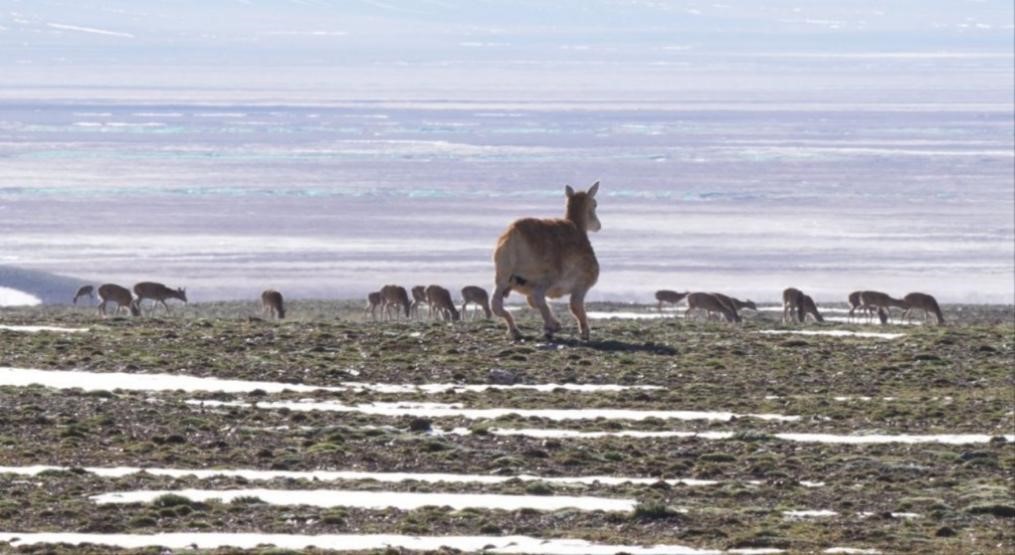
X30 robot dog, disguised as a robotic Tibetan antelope, observes the herd of Tibetan antelopes at an extremely close distance.
The "robotic Tibetan antelope" was initiated with an idea by the Xinhua News Agency, with DEEP Robotics providing X30 quadruped robot and communication control, and the Suzhou Bailuming Art Model completing the production of the simulated animal appearance. In this mission, the "robotic Tibetan antelope" built by DEEP Robotics, relying on artificial intelligence learning and training, successfully crossed complex terrains such as snow, swamps, deserts and rivers. In addition, during the scientific expedition shooting, LYNX M20 wheel-legged robot completed the test of carrying oxygen cylinders and other emergency supplies for the work team, and also withstood the challenges of the harsh plateau climate and terrain.
This is the first time that an embodied intelligent robot has entered the uninhabited area of Hoh Xil. DEEP Robotics' quadruped robot, relying on its hardcore strength, has entered the uninhabited area of the application of "AI + embodied intelligent robots".
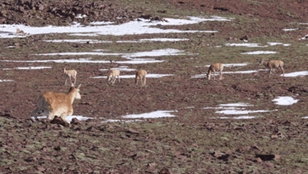
X30, disguised as a robotic Tibetan antelope, approaches and observes the herd of Tibetan antelopes.
Hoh Xil, located in Yushu Tibetan Autonomous Prefecture, Qinghai Province. The hinterland of Hoh Xil, at an altitude of nearly 5,000 meters, is cold and hypoxic, but it is known as the "kingdom of animals" because it is undisturbed. Every year from May to August, Tibetan antelopes from the Sanjiangyuan in Qinghai, Qiangtang and Altun in Xinjiang migrate one after another to Zhuonai Lake in the hinterland of Hoh Xil to give birth. Wild animals such as Tibetan antelopes are extremely sensitive. In this mission, the "robotic Tibetan antelope" had a control distance of 2 kilometers in the open area of Hoh Xil, calmly dealt with obstacles such as rough mountain roads and muddy wetlands during its movement, avoided disturbance and fright to Tibetan antelopes caused by vehicles and personnel, and successfully integrated into the herd of Tibetan antelopes for close observation and zero-disturbance shooting.
"There are still many unsolved mysteries about Tibetan antelopes, such as why they migrate to give birth, with various theories existing. The research and protection of Tibetan antelopes need to rely on the progress of science and technology," said Lian Xinming, a researcher at the Northwest Institute of Plateau Biology, Chinese Academy of Sciences, adding that the role of robots and artificial intelligence technology in Hoh Xil in scientific research and protection is worth looking forward to.

X30, disguised as a robotic Tibetan antelope, approaches to observe the herd of Tibetan antelopes.
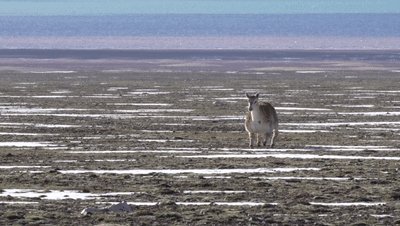
X30, disguised as a robotic Tibetan antelope, crosses snow, swamps, deserts and rivers.
In the extreme environment of the Qinghai, staff face harsh climatic conditions such as low temperatures and oxygen deficiency, and the rugged terrain also poses numerous obstacles for the entry of equipment. Legged robots have stronger terrain adaptability, and the quadruped robot X30 and wheel-legged robot LYNX M20 used in this scientific expedition shooting, after artificial intelligence learning and training, have endowed the robot dogs with stronger movement capabilities, enabling them to cross complex terrains more naturally, flexibly and intelligently in extreme environments.
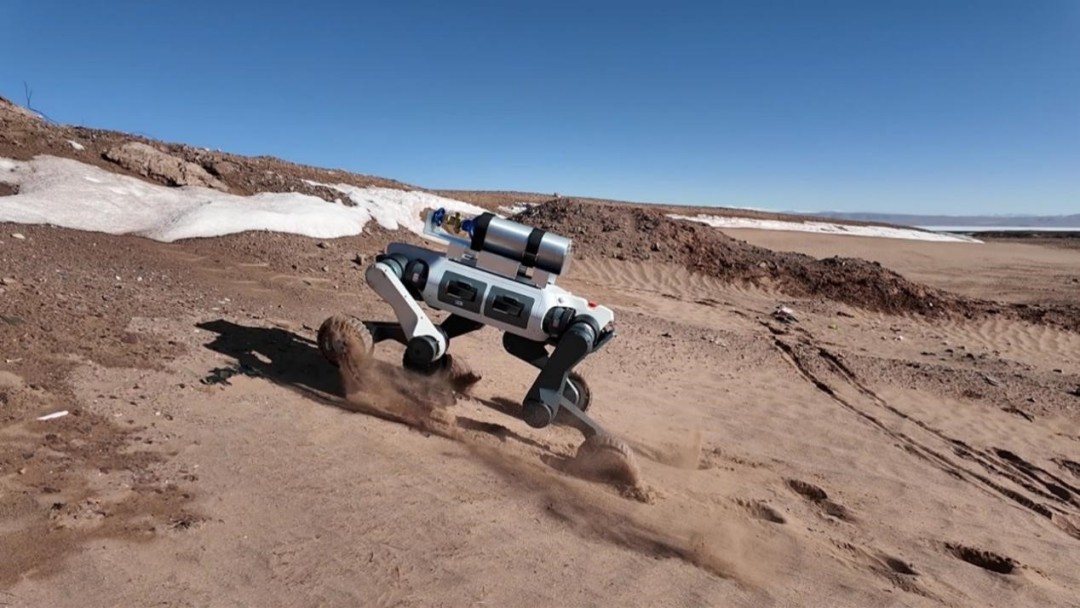
The DEEP Robotics LYNX M20 wheel-legged robot carrying emergency oxygen cylinders climbs the wild sand dunes in Hoh Xil.
The DEEP Robotics X30 robot dog, modified into a robotic Tibetan antelope, is equipped with an ad-hoc network communication module in this mission, which can be used for the rapid deployment of on-site networks under complex terrain conditions. By utilizing the characteristics of centerless, multi-hop connection and dynamic networking, it enhances the communication capability in mobile scenarios and realizes efficient information transmission and collaborative operations.
As a flagship industry-applied robot dog, X30 can carry a maximum weight of 85 kilograms under extreme conditions, with a battery life of 2.5-4 hours. Its original fusion perception capability enables it to steadily go deep into more complex and extreme terrains. Equipped with a real-time monitoring system and an emergency handling system, it has currently been widely applied in fields such as power station, factory and pipe gallery inspection, as well as emergency rescue and fire detection.
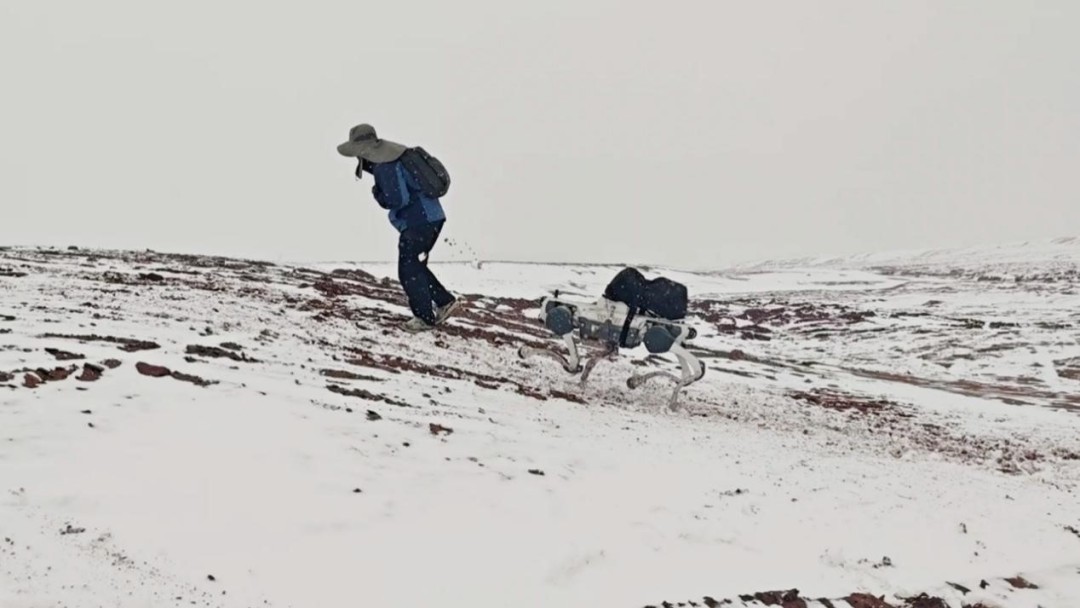
At 4,800 meters above sea level in Hoh Xil, the DEEP Robotics X30 robot dog works normally in a snowstorm.
LYNX M20 is an industry-grade all-terrain robot built for applications in complex terrains and dangerous environments. With advanced AI motion control algorithms, LYNX M20 can autonomously adjust its posture to cope with extreme terrains. Its unique wheel-legged design enables LYNX to combine the speed of wheeled robots and the obstacle-surmounting advantages of legged robots, with a movement speed of up to 5 meters per second. Designed for harsh weather and climatic conditions, LYNX M20 also has IP67 waterproof and dustproof performance and the ability to work in a temperature range from -20℃ to 55℃.
To prevent poaching, illegal mining, and unauthorized entry, rangers in Hoh Xil have to conduct year-round patrols here at the risk of their lives and health damage. Therefore, some scientific and technological projects have begun to enter Hoh Xil. "Chinese hardcore technologies such as robots and artificial intelligence assisting in protection work will provide 'scientific and technological momentum' for Hoh Xil," said Qiupa Tashi, head of the Law Enforcement Supervision Section of the Hoh Xilof the Three-River-Source National Park Administration.
The original aspiration of DEEP Robotics in making robots is to replace humans in going to dangerous places and doing repetitive work. In the future, DEEP Robotics will further improve and optimize product solutions according to the environment and needs of Hoh Xil, and collaboratively and intelligently protect Tibetan antelopes.
Media Contact
Company Name: DEEP Robotics
Contact Person: Vera Huang
Email: Send Email
Country: China
Website: https://www.deeprobotics.cn/en
